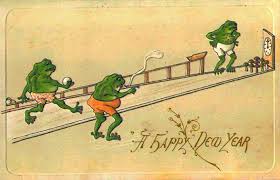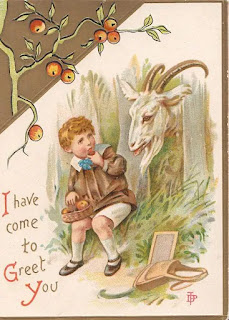As many of you know, "Darkness Visible" would not have been written had it not been for my Grandfather Busch's family stories, passed on through my father. This Father's Day, I'd like to pass on more information about Grandpap, this time learned through research.
Last November, Anne Madarasz, a curator at Heinz History Center in Pittsburgh, contacted me about the Munhall High School rifle team, which they wanted to feature in an exhibit, "A Woman's Place: How Women Shaped Pittsburgh." The mostly-women team, of which I was a member 1957-1961, still holds the record for state championships (17), even though the Munhall School District no longer exists.
In discussing Pittsburgh sports with Anne, the topic turned to Grandpap Busch, who I knew from Dad's stories to be a professional football player, sandlot baseball player, friend of Honus Wagner, avid baseball fan, and promoter of teams in the Homestead area, including the Homestead Grays.
Rooting around through old photos reminded me of how much my grandfather was involved in sports. Although George obviously loved football and played on winning teams, I think baseball was his first love. As a teenager, he was involved in sandlot baseball. One of his pals at sandlot was another German immigrants' son, Honus Wagner. Both were born in 1874, and both are interred at Jefferson Memorial. My dad remembered Wagner coming to dinner at the Busch home in Munhall sometime around 1920. In the 1950s, Dad introduced me to Pie Traynor, who told me he knew my grandfather and admired his work with Homestead mill and community baseball teams.
Pie Traynor, Pirates' star third baseman and Hall of Famer
Every year for 60+ years Grandpap attended the Pirate opener at Forbes Field. In his later years, Dad would drive Grandpap to Oakland, and they'd park and walk over a mile to Forbes Field. Dad said his father easily kept up a good pace. Every year, George's opener record would be featured on local media. At home, George listened to games on the big console radio in the living room, sitting in an easy chair right next to it. During lulls in the action, he'd sometimes nod off. If someone woke him up, he'd say he was "just resting his eyes."
He supported/managed a number of mill baseball teams. There's a photo of him with one of these teams, Mechanics 1919, with my dad as bat boy. A copy of this photo has been used on Eat'N'Park and other local restaurant menus, and one hangs in the back room at Duke's on Eighth Avenue. When I was at Duke's in August last year for my Munhall class reunion, I pointed it out to the wait staff (top photo).
I sent this information to Craig Britcher, assistant curator of the Center's Western Pennsylvania Sports Museum, who took the ball and ran with it, so to speak, and did some research on Grandpap. He found some new information and confirmed some of the family stories. I sent him the photo of George, his brothers Walter and Frank, and brother-in-law in the photo of them after they won the 1895 City League football championship game. (See https://valleyofsteel.blogspot.com/2012/01/city-league-champs-1895.html). Craig discovered that George likely played football on the team coached by James F. Lalus team. Craig sent me two clippings showing the lineup of the Lalus team vs. the College Reserves and the Braddock team during the 1896 season, showing George playing left guard.
Craig, being a big fan of Honus Wagner, pursued George's connection to him. Craig found an article confirming the family story that George and Honus were childhood friends. The article, which appeared in the Pittsburgh Post on 28 Feb. 1953, says George was an "old friend" of Wagner's, and that they were the same age.
But what totally surprised me was the statement that "in his younger days, Busch. . .played professional ball with Christy Mathewson." Mathewson, like Wagner, was among the first five players admitted to the Baseball Hall of Fame. He was among the most dominant pitchers in baseball history, and ranks in the all-time top 10 in several key pitching categories, including wins, shutouts, and earned run average. And in the early days Grandpap played on the same team with him!
As for Wagner, after retirement he remained very involved in Pittsburgh baseball--he continued playing, was involved with a number of sandlot leagues, and coached at Carnegie Tech. He and George likely kept contact through their support of local teams, including the mill teams.
I sent the Center the large framed stereopticon photo of a "Homestead Steel Works
Baseball Team, Geo.Busch, President" that hung in my grandparents' house and later my house for many decades. The names of all the players and
coaches are written over their images. Craig discovered that it was taken in 1914, and he used it in a blog post on Homestead sandlot baseball teams. (See Homestead's Asmongas: Sandlot Baseball Tradition in a Steel Town)
The Pirates, alas, are currently at the bottom standing in the National League Central division. Grandpap Busch, a die-hard fan, would still be listening to the games if he were still around, but I don't follow them or any baseball team today.
I was a devoted Pirate fan in the 1950s and '60s. I stayed up till 11:30 to listen to the play-by-play of Harvey Haddix pitching a perfect game for 12 innings against the Milwaukee Braves, but losing the no-hitter and the game in the 13th inning (May 26, 1959), and I watched the Pirates' winning the "Greatest Game Ever Played" in the '60 World Series from the Munhall High School auditorium. (See http://valleyofsteel.blogspot.com/2021/10/world-series-game-7-greatest-game-ever.html)
Nevertheless, I honor the family connection with Pittsburgh baseball by wearing a Pirates cap as a memento of the glory days at Forbes Field and Grandpap's connection with local baseball.
Play ball!
Forbes Field "Take me out to the ball game.
Take me out with the crowd.
Buy me some peanuts and cracker jack.
I don’t care if I never get back.
Let me root, root, root for the home team.
If they don’t win it’s a shame.
For it’s one, two, three strikes, you’re out.
At the old ball game!"





















































